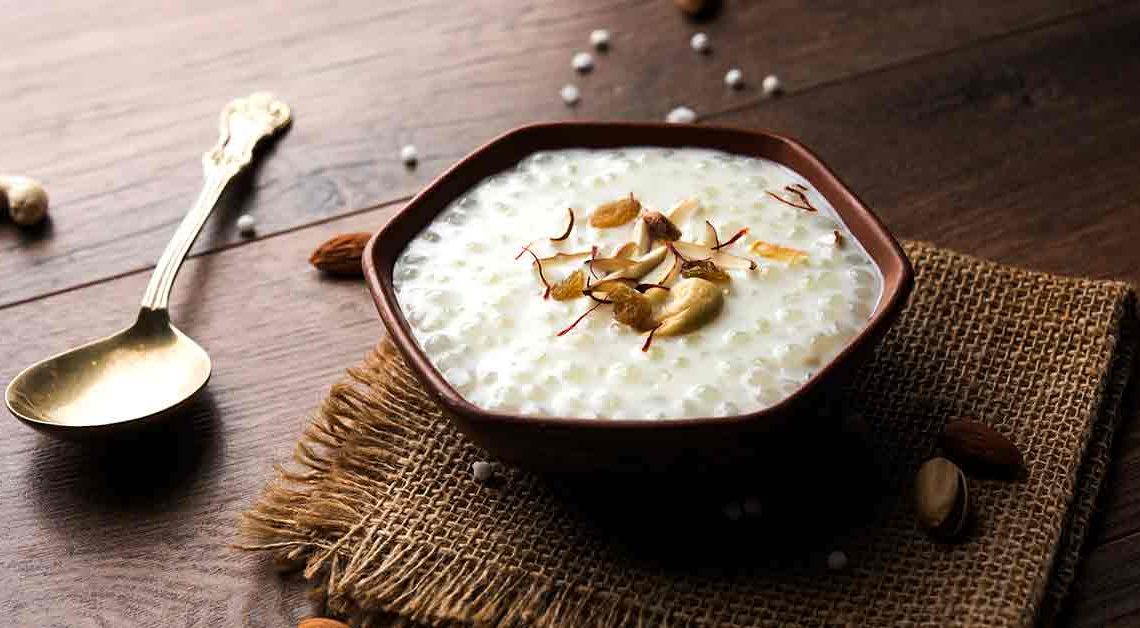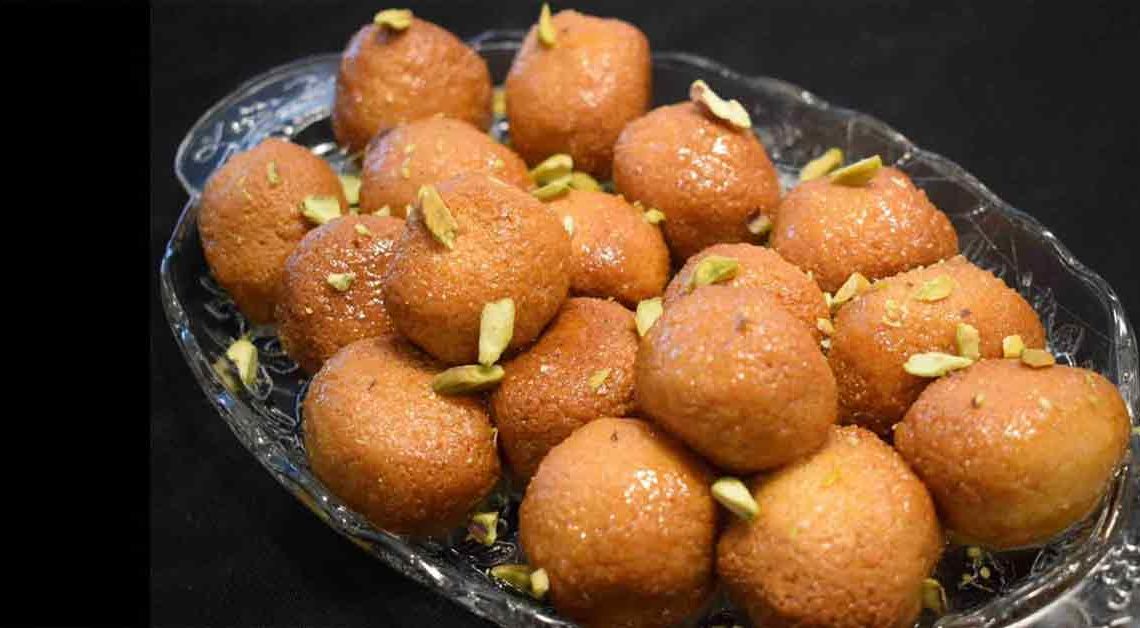Creamy Delights: Heavenly Sabudana Kheer

Welcome to our Mithainama, where we embark on a delectable journey through the heartwarming world of Indian cuisine. Today, we dive into the velvety indulgence of Sabudana Kheer – a dessert that’s not just a dish, but a celebration of culture, festivities, and the art of culinary magic.
Picture this: pearls of tapioca suspended in a creamy concoction of milk, gently simmered to perfection. Sabudana Kheer isn’t just a dessert; it’s a canvas of flavors, each spoonful an exquisite blend of tradition and innovation.
From the bustling streets of Mumbai to the serene kitchens of Rajasthan, Sabudana Kheer has graced countless tables during religious fasting and joyful celebrations alike. Its versatility knows no bounds – whether adorned with the aromatic kiss of cardamom or enriched with the golden hue of saffron, this dessert dances on taste buds and nourishes the soul.
Origin of Sabudana Kheer
It is a popular Indian dessert made from sabudana, which are small pearl-like balls made from tapioca starch. The dish is commonly prepared during religious festivals, fasting days, and special occasions in India. The origin can be traced back to traditional Indian cuisine and cultural practices.
Tapioca itself comes from the cassava plant, which is native to South America. However, it was introduced to India and other parts of the world through European colonial trade routes. Tapioca pearls, such as sabudana, were likely brought to India by Portuguese traders during the colonial era.
In India, tapioca pearls were incorporated into the culinary traditions and adapted to local tastes. Sabudana became an integral part of Indian cuisine, especially in dishes prepared during fasting periods or festivals. Sabudana Kheer, being a sweet and creamy dessert, is a delicious way to enjoy these tapioca pearls.
The exact timeline of the origin is not well-documented, as it is part of the rich tapestry of Indian culinary history. It’s important to note that many Indian dishes have evolved over centuries through cultural exchange, regional variations, and local innovations.
History of Sabudana Kheer
The history is closely intertwined with the cultural and culinary evolution of India. While exact historical records might be scarce, we can still trace the general development and context of this dessert.
The use of ingredients like milk, rice, and sweeteners in Indian cuisine dates back to ancient times. Kheer, a rice pudding cooked in milk and sweetened, is a well-known traditional Indian dessert. Over time, variations of kheer were created, and sabudana eventually found its way into this culinary tradition.
Tapioca, from which sabudana is made, originated in South America. It was brought to India by European traders, particularly the Portuguese, during the colonial period. The introduction of tapioca pearls to the Indian subcontinent led to their incorporation into local dishes.
As with many Indian dishes, the preparation and flavors of Sabudana Kheer vary across different regions of India. Regional ingredients and culinary practices influenced the way the dessert is prepared. Different communities and households have added their unique touches, spices, and flavors to the dish, creating a diverse range of recipes.
Cultural Significance
Sabudana Kheer holds cultural significance in various aspects of Indian society and tradition. Its importance is rooted in religious practices, festivals, and dietary customs. Here are some ways in which Sabudana Kheer is culturally significant:
Fasting and Religious Observances: It is a common dish prepared during Hindu fasting periods. It is considered a suitable food for fasting due to its high carbohydrate content and energy-providing qualities. Fasting is an integral part of Hindu religious practices, and is often consumed as a meal during fasting days, such as Navratri and Ekadashi. It helps adherents sustain themselves while abstaining from regular foods.
Festival Celebrations: The dessert is a popular treat during festive occasions, particularly during Navratri, a nine-night festival dedicated to various forms of the goddess Durga. Devotees fast during this period and break their fast with dishes like Sabudana Kheer. The dessert symbolizes an offering to the deity and marks the end of the fasting period, bringing joy and satisfaction to the celebration.
Cultural Diversity: India’s cultural diversity is reflected in its cuisine, and it is a prime example. The way the dessert is prepared, the spices used, and the accompanying ingredients can vary greatly from region to region. This diversity showcases the rich tapestry of Indian culinary traditions and the influence of local flavors and preferences.
Where is Sabudana Kheer Famous?
Sabudana Kheer is famous and enjoyed across various regions of India, especially in states with a significant Hindu population where fasting and festival observances are common. Here are some regions where Sabudana Kheer is particularly famous:
Maharashtra: It is popular in Maharashtra, especially during the festival of Navaratri. It is a staple during the fasting period, and people in Maharashtra prepare and enjoy it as a traditional dessert.
Rajasthan: In Rajasthan, it is enjoyed during festivals and fasts. It’s prepared with local flavors and often contains ingredients like cardamom, saffron, and dry fruits.
Uttar Pradesh: It is prepared and relished during festivals and fasting periods in Uttar Pradesh. It’s known for its creamy and rich texture.
Interesting Facts and Trivia
Certainly! Here are some interesting facts and trivia related to Sabudana Kheer:
- It is a popular choice for consumption during Hindu fasting periods due to its energy-boosting properties. It provides a quick source of carbohydrates, making it suitable for those abstaining from regular meals.
- In many fasting recipes, Sabudana is used as an alternative to rice. While rice is typically avoided during fasting, Sabudana offers a similar texture and taste while being permissible for fasting.
- Sabudana is naturally gluten-free, making kheer a great option for individuals with gluten sensitivities or celiac disease.
- Sabudana is made from tapioca pearls, which are derived from the cassava root. Tapioca is widely used in various cuisines around the world for its versatility.
- The kheer is typically prepared by cooking tapioca pearls in milk until they become soft and creamy. Flavorings like saffron, cardamom, and nuts are added to enhance its taste and aroma.
Did You Know?
Sabudana Kheer, a traditional Indian dessert made from tapioca pearls, holds cultural significance in festivals and fasting practices. But beyond its cultural importance, this creamy treat also brings potential health benefits to the table.
- Sabudana, the main ingredient, is a rich source of carbohydrates, providing a quick and sustained energy release. This makes it an ideal choice during fasting or when an energy pick-me-up is needed.
- Tapioca pearls are easy to digest, making kheer a gentle option for those with sensitive stomachs or digestive issues.
- Tapioca is naturally gluten-free, making this dessert suitable for those with gluten sensitivities or celiac disease.
- Milk, a key ingredient in Sabudana Kheer, provides calcium, promoting strong bones and teeth.
- Tapioca pearls absorb water when cooked, aiding in hydration and contributing to fluid intake.







